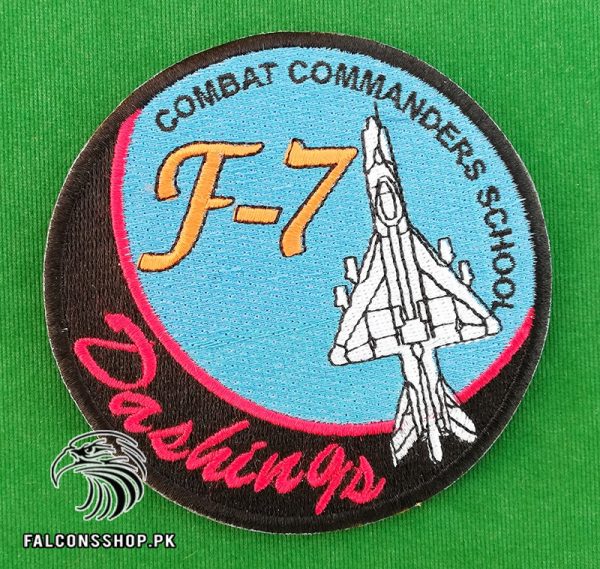By Parth Satam
Recent pictures and reports about the Pakistan Air Force’s (PAF) JF-17 Thunder single-engine fighter co-developed with China indicate that its Block-3 version is progressing rapidly and could join the service soon.
A photo of a pilot wearing an advanced Helmet Mounted Display (HMD), claimed to be from inside a JF-17C (or Block III), went around on social media. Also, another report about the jet being further upgraded also interested observers.
Reported to share some of the technology from China’s J-20 ‘Mighty Dragon’ stealth fighter, the JF-17 is expected to replace the Pakistan Air Force’s (PAF) aging fleet of Chengdu F-7 and Dassault Mirage-III/V.
The JF-17 Thunder is a medium-sized multi-role fighter plane developed jointly by China’s Chengdu Aircraft Corporation (CAC) and Pakistan Aeronautical Complex (PAC). The service has inducted more than 100 Thunder jets since 2007. Of these, 26 are Block II variants that were added in 2020.
JF-17 Thunder Block-3
A photo of a pilot inside the cockpit of a JF-17 Block III/JF-17C wearing a Helmet Mounted Display (HMD) similar to the ones J-20 pilots have been shown wearing in leaked images and official pictures and videos is the first indication of the rapid evolution of the jet.
An HMD beams all vital flight information that is usually shown on the screens and displayed directly on the visor in the cockpit.
This reduces the stress of flying and allows the pilot to focus more on the combat component of the mission. It is also one of the major systems a plane must possess to be counted in the Generation 4++ category.
Many social media discussion forums have claimed increased use of carbon fiber composites in the newer variants, which reduces the aircraft’s weight.
A report in Pakistan’s Express Tribune quoted an unnamed official of the Pakistan Aeronautical Complex (PAC) saying, “further upgradation (of the jet) is in progress.” The report came from the recently concluded International Defense Exhibition and Seminar (IDEAS) 2022 in Karachi.
The first images of the first batch of the JF-17C/Block III in serial production paint scheme fresh off the assembly line surfaced on the web in January this year. The photos showed seven JF-17s outside the PAC facility in Kamra.
A report on leading defense aviation portal Aviacionline said that while the picture showed eleven JF-17s, the serial numbers of the jets indicate they could be eleven units.
The JF-17C/Block III is thought to have taken to the skies for the first time in December 2019. The PL-10E, which China describes as its most advanced short-range air-to-air missile, was also spotted being carried by the JF-17 Block 3/JF-17C in 2021.
JF-17, A Formidable Fighter?
The JF-17C has notable upgraded capabilities, such as Missile Approach Warning Systems (MAWS), Wide Angle Smart HUD, more hard points on the chin, and an integrated electronic warfare (EW) suite.
Another photograph that has gained popularity on the internet is thought to be the finest image of a PAF JF-17C. The photo was tweeted by noted Chinese military aviation expert Andreas Rupprecht.
A military expert in Beijing was quoted by Global Times in a 2021 report, “With the PL-10, the JF-17 Block III will gain tremendous dogfight capability and have an edge even against its heavier opposing counterparts in homeland air defense.”
The aircraft is equipped with KLJ-7A airborne active electronically scanned array (AESA) fire-control radar. There were previous reports that the JF-17 is poised to get some of the technology, avionics, and electronics used on the J-20, but it remained unconfirmed until now.
While the extent of the overlapping technology the JF-17C might share with the J-20 is unclear, reports and photographs indicate the claims were not entirely false.
The new jets boast improved “high off-boresight” capability. The “aircraft can fire from whatever position, and its missiles will adjust thrust, speed, and trajectory to hit targets.”
Threat To Indian LCA Tejas?
Asked whether the JF-17C/Block III is on part with India’s Light Combat Aircraft (LCA) Tejas, Andreas Rupprecht, a Germany-based Chinese military aviation expert, wondered if the Tejas can match the Thunder.
Rupprecht pointed to the Chinese-Pakistani aircraft’s multiple upgrades over the years and operational deployment that have made it very capable. He admits that older JF-17s lag, though.
“There are almost a hundred in service already for years with vast operational experience and even wartime operations, while the Tejas is still only available in limited numbers.
So yes, the older ones are technically not on par but not as bad as some Indians want to make it look. It is available in much larger quantities. If all goes well, the C model will be in service with better avionics, weapons, and AESA long before the first AESA-equipped Tejas reaches a frontline unit. This is not to speak of the Mark 2,” Rupprecht said.






